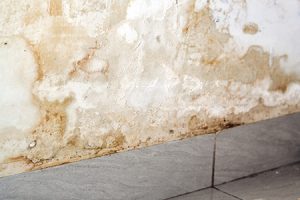Almost everyone has got their own assumption on the subject of How to Repair and Prevent Bathroom Water Damage.

The shower room is very prone for damp build-up as well as prospective water damage due to the frequent use of water in it. This article offers straightforward examination strategies to aid finding water damages dangers.
The regular use of water in the bathroom makes it extremely vulnerable for wet buildup as well as prospective water damage. By inspecting it consistently, you can lower water associated damages.
The following collection of examinations is simple to carry out and should be done as soon as in every 3 months in order to keep your bathroom healthy and to stop prospective water damages caused by the bath tub, the shower, pipeline joints and plumbing, sinks, closets, and also the bathroom
Do not neglect executing these assessments as well as be thorough while executing them. Bear in mind that these simple examinations can conserve you a lot of cash by offering early signs for water damage
Sinks and also Cabinets
Sinks as well as cabinets are revealed to wetness and moisture daily and also are typically overlooked. Check routinely under the sink and also on the countertop over it. Repair any kind of drip in the trap as it might suggest drainpipe issues. Look around the sink, sluggish draining pipes might indicate an obstructed drain. Change sink seals if they are cracked or loosened.
Bathtub as well as Shower
The shower and tub call for unique interest and also maintenance. Examine the tiles and also replace if split. Make sure that there is no missing cement between the floor tiles. Inspect as well as change broken caulking at joints where the wall surfaces meet the flooring or the bath tub. Clogged drains pipes and pipes troubles will stop the bath tub from drying as well as might indicate severe troubles below the bathtub. Talk to a specialist instantly to stop architectural damage. Focus on stainings or soft areas around the tub wall surfaces as they might indicate an interior leakage.
Plumbing
Signs for water damages are hard to identify because the majority of pipes are set up inside the wall surfaces.
Pay special interest to floor covering and walls dampness and spots as they might indicate an unnoticeable plumbing trouble. Check wetness degrees in adjacent rooms also.
The Commode
The commode is a susceptible water junction. Inspect the water lines and also search for leaks around the bathroom seat, in the tube, and under the water tank. If you find any kind of signs of moisture on the flooring around the commode, look for leaks in the toilet rim as well as storage tank seals.
Realize that hanging toilet dish antiperspirants increases the chances for clogs.
Water Damage Signs In The Bathroom To Avoid Cleanup
Musty smell
This is one of the easiest signs to catch because musty smells are so odorous. The damp, earthy, moldy smell should be a big red flag. The smell will develop when moisture gets trapped in surfaces, and begins to facilitate mold growth. Leaking pipes under cabinets, inside walls, and behind shower fixtures will cause moisture to stay trapped and not dry, which will lead to mold growth and spread. As soon as you notice any musty smells in your bathroom, have it checked for hidden water damage and cleanup signs.
Visible mold
If the smell isn’t there to give it away, sometimes you will actually see mold growth. Finding mold in your bathroom is a serious problem, because mold is very harmful to your health. By the time mold growth is visible, it also means that water damage has already occurred and been present for some time. The only way the mold problem can be resolved is to find the source of the moisture and get it stopped. To safely and adequately remove mold, you need to have professionals handle the remediation. Do not waste any time in getting mold problems addressed, fixed, and sanitized so that you can protect you and your family from the many respiratory symptoms caused by mold exposure.
Damaged floors
Bathroom floors should be able to withstand some exposure to water while still remaining in good condition. However, when excess exposure or water leaks occur, they will begin to damage even the most water-resistant flooring. If you notice any cracking, bubbling, staining, or warping on your bathroom floors, there is probably a water leak somewhere causing the distortion. If you notice areas of the floor have become softer, or even have a spongy feeling, there is probably damage to the subfloor. Subflooring is typically made up of plywood. When plywood is exposed to water or moisture, it will absorb it. Once it has become saturated, the weight of the excess water will cause the wood to swell and soften. Check the floors in your bathroom frequently to catch any of these sings before they lead to damaged subflooring.
Changes on walls
When water leaks behind walls, it will cause changes in the drywall. Peeling plaster, blistering paint, and soggy wallpaper are all good indicators that excess water is building up behind the wall. Water leaking behind drywall will cause it to swell and be soft to the tough. If you start to notice gaps along the trim of your walls, or where tile meets the wall, it could also be a strong indicator that there is a leak behind the wall. Any changes, distortion, or damage on the walls should be evaluated as soon as you notice it to prevent further water damage and cleanup.

As a fervent reader about How to Fix a Water Damage Bathroom, I figured sharing that piece of content was really useful. Sharing is good. You just don't know, you may very well be helping someone out. Thank you for your time. Please check our site back soon.
Visit The Following Page